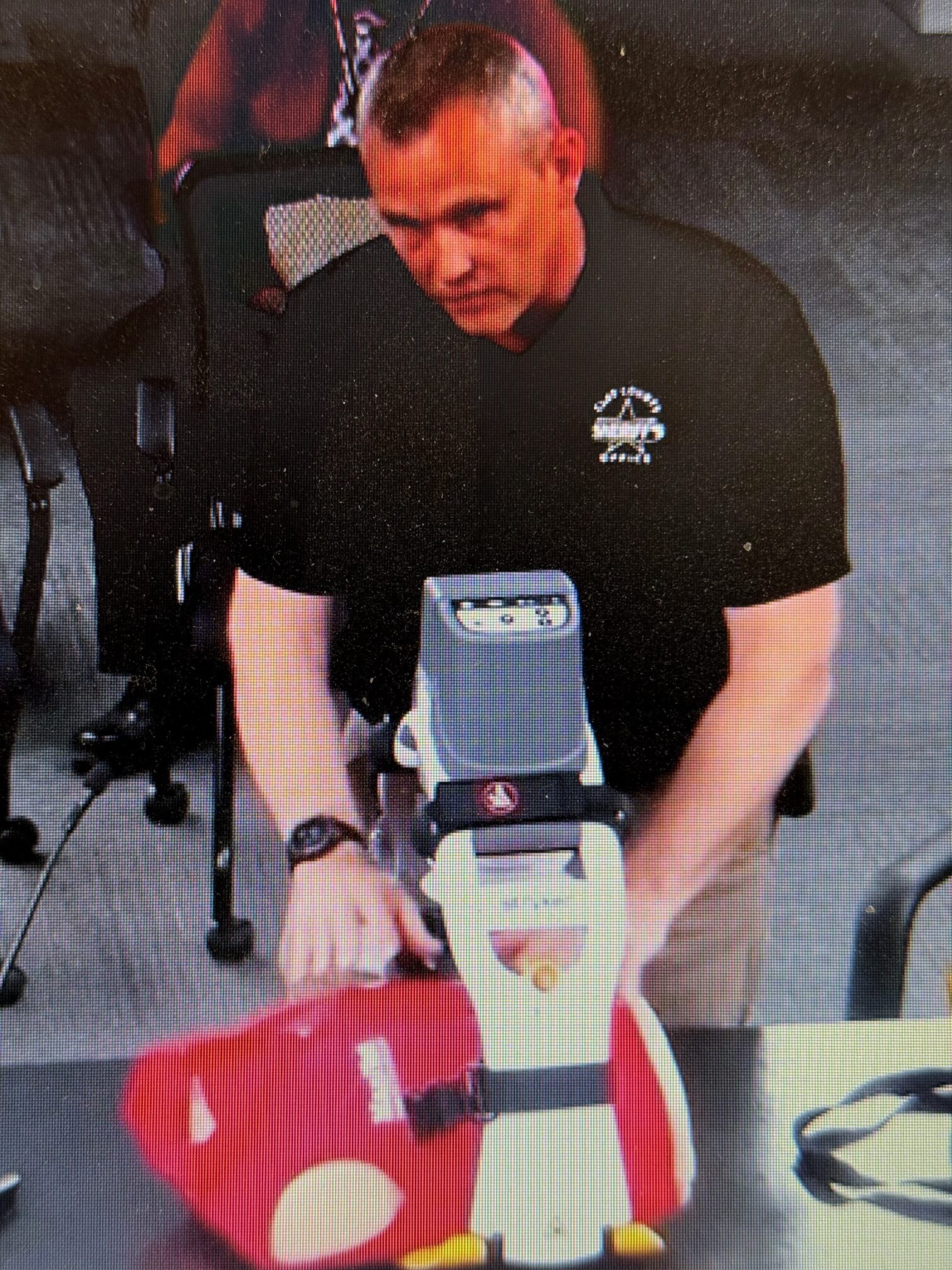
Clay County Emergency Management Director Gabe Tweten demonstrates the LUCAS device, which mechanically simulates CPR. The county recently received the device and funds for tracing through a Helmsley charitable grant.
Clay County Commission
Dan Haglund
The Clay County sheriff and Emergency Management director got to play show-and-tell with a state-of-the-art CPR machine it received through a grant.
The presentation was made Tuesday morning for the Clay County Board of Commissioners in Moorhead at the regular weekly meeting.
The Lund (Sweden) University Cardiopulmonary Assist System (LUCAS) device, used for mechanical CPR, can be used to save a life in the event of a cardiac event and provides chest compressions. A person in cardiac arrest will have the device strapped around their chest, with the mechanism pushing down on the front of the person at a set speed and depth.
“These have been a proven tool in life-saving measures for people,” said Sheriff Mark Empting.
It is mostly used in emergency medicine as an alternative to manual CPR because it provides consistent compressions at a fixed rate through difficult transport conditions and eliminates the physical strain on the person performing CPR.
Rapid defibrillation is crucial for improving survival rates in cases of ventricular fibrillation.
The New York-based Helmsley Charitable Trust grant covered about $25,000 for the medical device, Empting said, and this county was just one of about 25 agencies around the state to receive it.
“It’s a great device and we have seen it work very effectively,” Empting said. “To have them in a deputy’s squad car is going to be great, because there are times that we are the first on scene. There are times that we are the only ones responding.”
Empting said not all deputy cars will be equipped with the LUCAS devices, but that would be quite expensive. The sheriff indicated that his department may look into getting more grant monies for this purpose.
Gabe Tweten, Clay County Emergency Management director, demonstrated that one person can easily set up the device.
Tweten said as part of the grant, two of the county deputies went to Alexandria, Minn., for a “train the trainer” seminar on how to use the device. Those two he said will run everyone in the sheriff’s office through the training.
Tweten explained that the Helmsley grant put out $18 million for AED devices for all squad cars a few years ago, and that this new device has been sent out to see how it goes for the 25 state agencies.
“Their goal is that we are basically one of the pilot counties to try it out, see how it works, especially in rural areas,” Tweten said. “And then their goal is to expand this program throughout the state if it’s well received.”
And although the Clay County officials sing the device’s praises, there have been studies that showed less effective results than traditional CPR.
The LUCAS device has shown inconsistent survival rates compared to manual CPR. Some studies have found no significant difference in survival rates, while others have indicated that LUCAS may lead to worse outcomes.
A study in the Journal of Emergency Medicine found a 30-day survival rate of 5.07 percent in the LUCAS group compared to 16.31 percent in the non-LUCAS group.
A Journal of Emergency Medicine study and a study published in ScienceDirect.com found that LUCAS use led to lower 30-day survival rates compared to manual CPR.
But a study by Lippicott with 2,500 patients found no significant difference in 30-day survival rates between the LUCAS and manual CPR groups, and a study by Stryker showed similar four-hour survival rates with LUCAS-CPR and manual CPR.
The New York City-based Leona M. and Harry B. Helmsley Charitable Trust began its active grantmaking in 2008 after Leona’s passing. It is a global philanthropy committed to helping people live better lives and creating stronger, healthier futures for individuals and communities, with $7.3 billion in assets as of 2024.
The Helmsley grants have totaled millions of dollars in both Minnesota and North Dakota in recent years.

